Using Amazon S3 with Coco Alemana
Access files stored in S3 using Coco Alemana or any other application.
About the Coco Alemana S3 Integration
Section titled “About the Coco Alemana S3 Integration”Coco Alemana’s native integration provides deeply integrated connectivity with S3. You can access data in S3 via Coco Alemana directly, or through the macOS filesystem. Our integration replicates the S3 directory structure on your local computer, allowing you to navigate, add, delete, or modify files all without having to use the AWS CLI, Console, or SDKs. Files will be automatically synced to S3 for you. In addition, other applications on your Mac can make use of this integration too.
Access to Amazon S3 requires Coco Alemana version 0.5.0 or later.
How it works
Section titled “How it works”Our integration intercepts macOS system calls and, when needed, makes requests to your S3 bucket to retrieve file metadata information, or file contents.
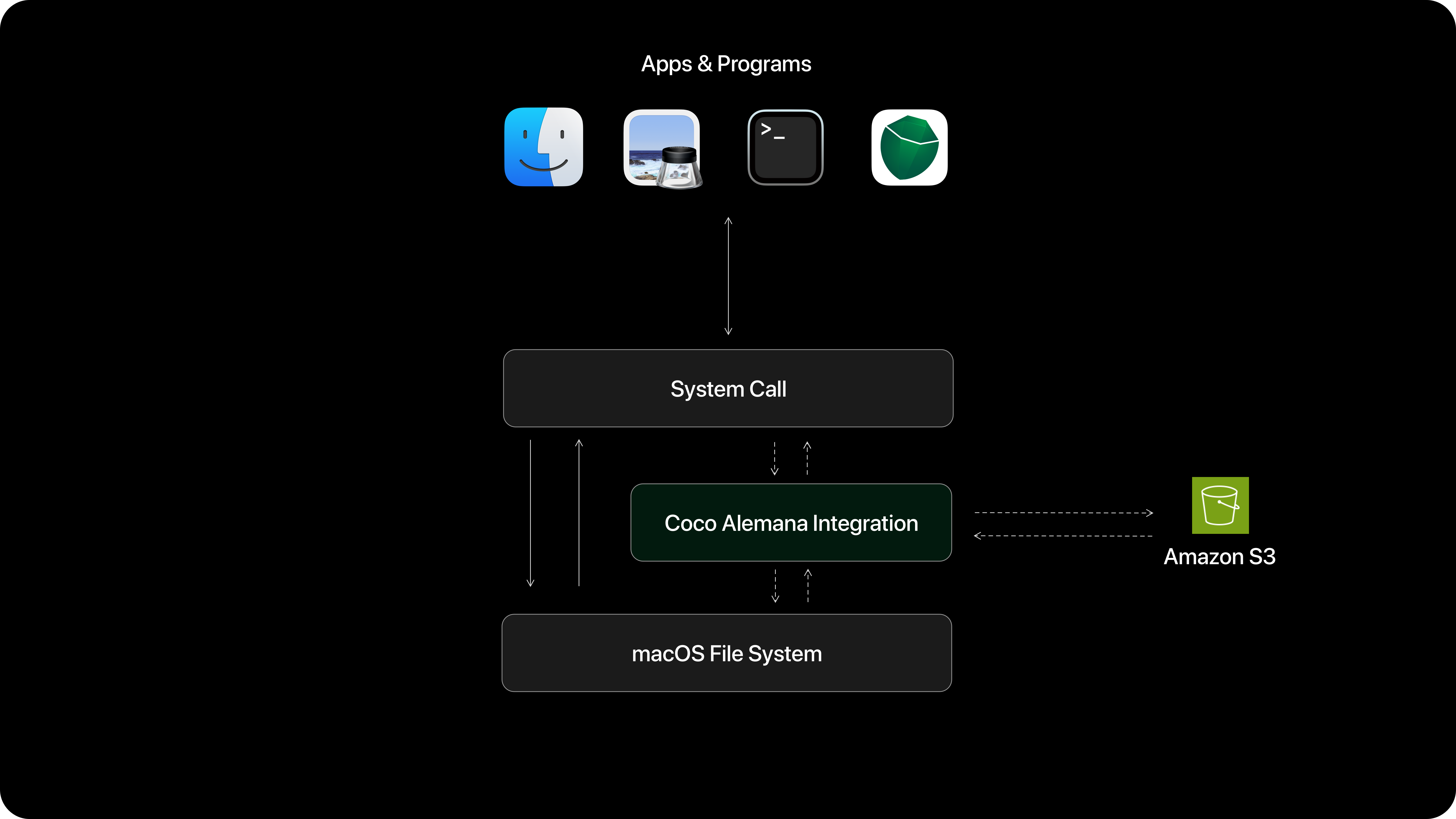
The integration handles synchronization on your behalf as well. This means you can drop files into an S3 folder, and they’ll be uploaded automatically. If your network changes, or a failure occurs, the integration will automatically retry whenever it can. You can even save data to S3 while you’re offline, and the integration will sync when internet becomes available again.
macOS also manages the storage space on your device. Meaning that if you run out of storage space, it will automatically remove local copies of S3 files that are no longer in use. It will not remove files which have yet to sync with S3.
Using Coco Alemana
Section titled “Using Coco Alemana”Importing Data
Section titled “Importing Data”You can access S3 files by importing a new frame, and selecting the “Amazon S3” option. When you do this, the file will be downloaded from S3, or use the locally saved file if it exists. This means that working with large datasets (GBs) may take some time to download.
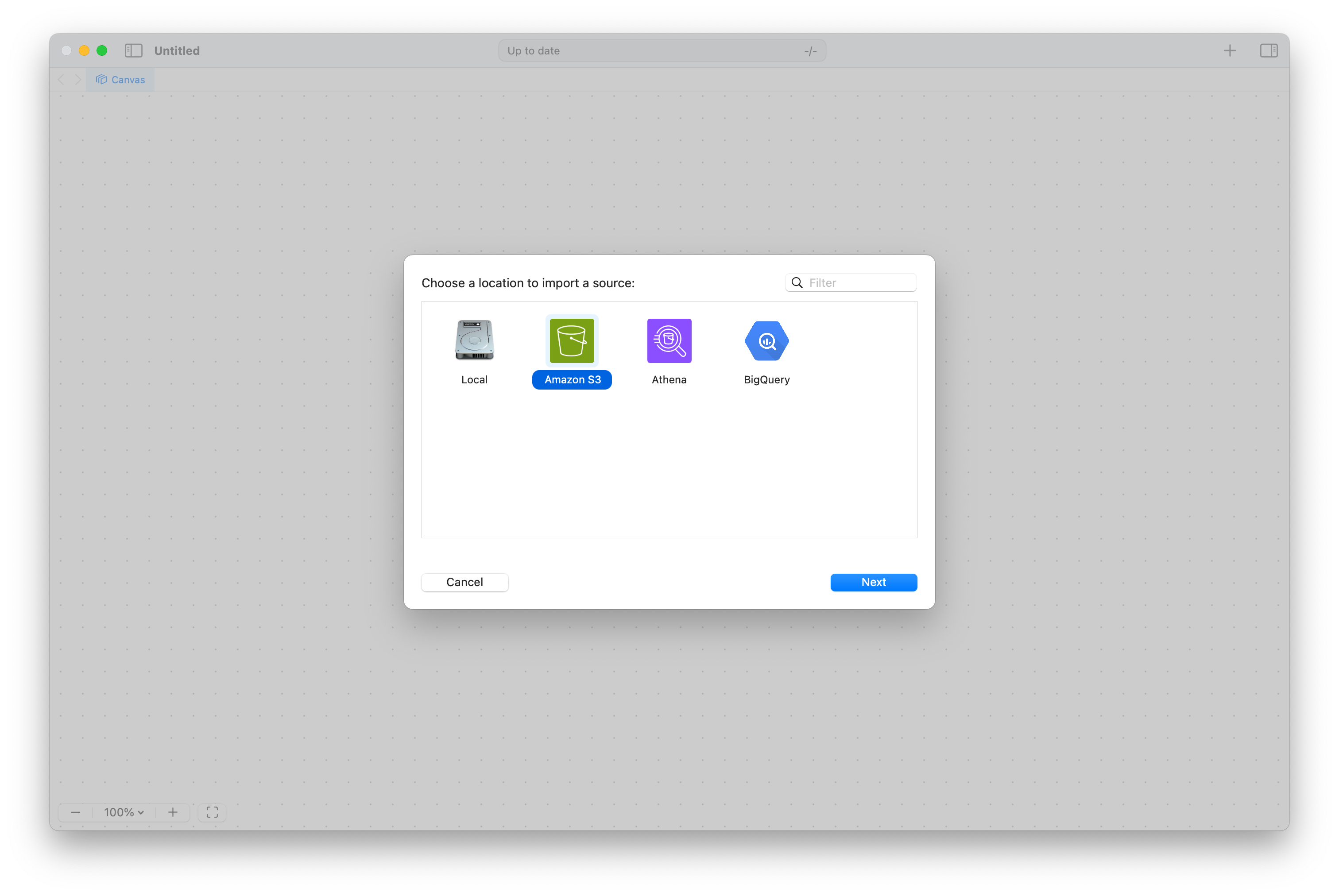
You can also use the Open Quickly feature to jump directly to a file based on it’s s3 path.
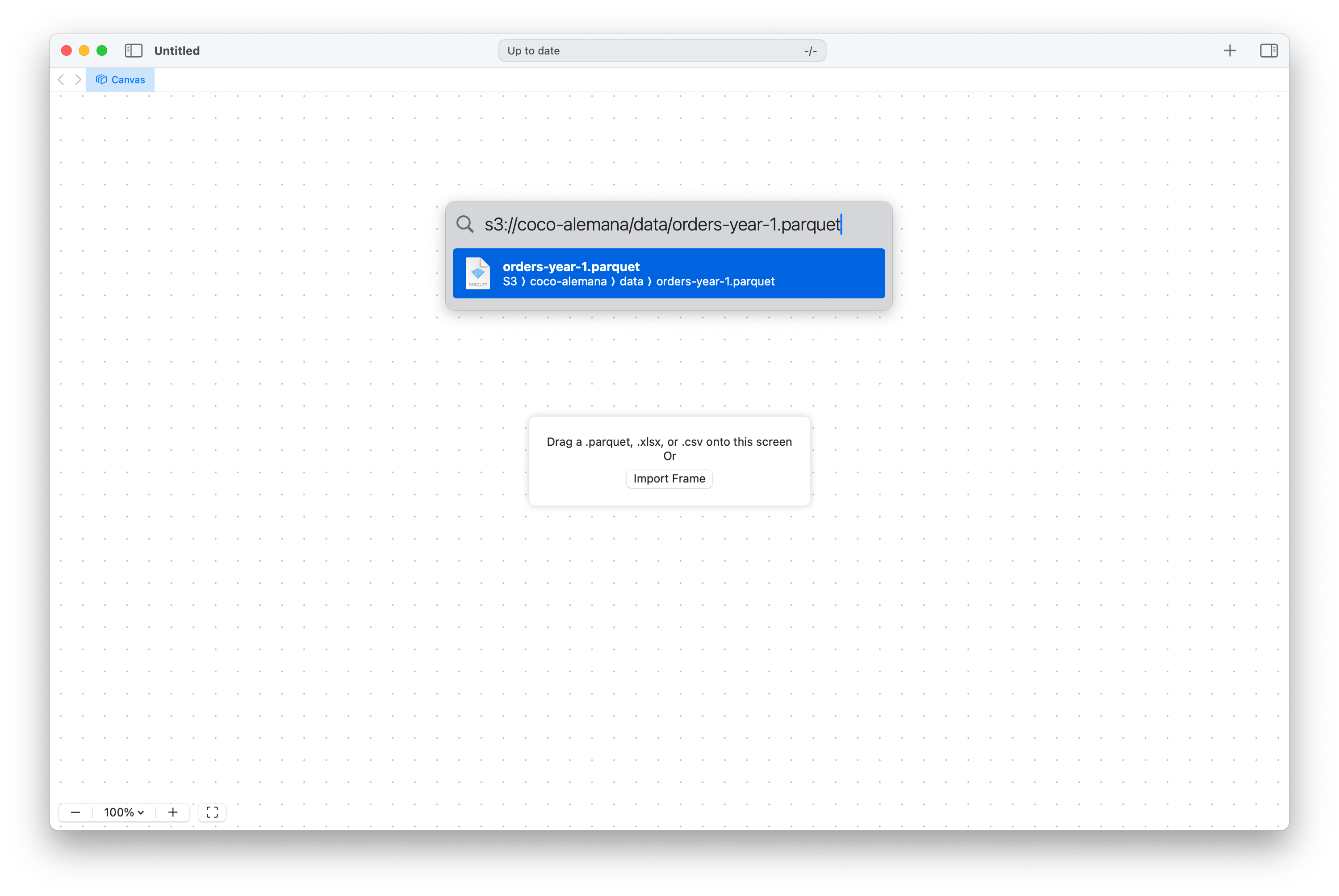
Exporting Data
Section titled “Exporting Data”You can export almost any frame to S3 by selecting the correct output type (Amazon S3). If your data is stored remotely, Coco Alemana will download the result of the frame to the S3 folder you select.
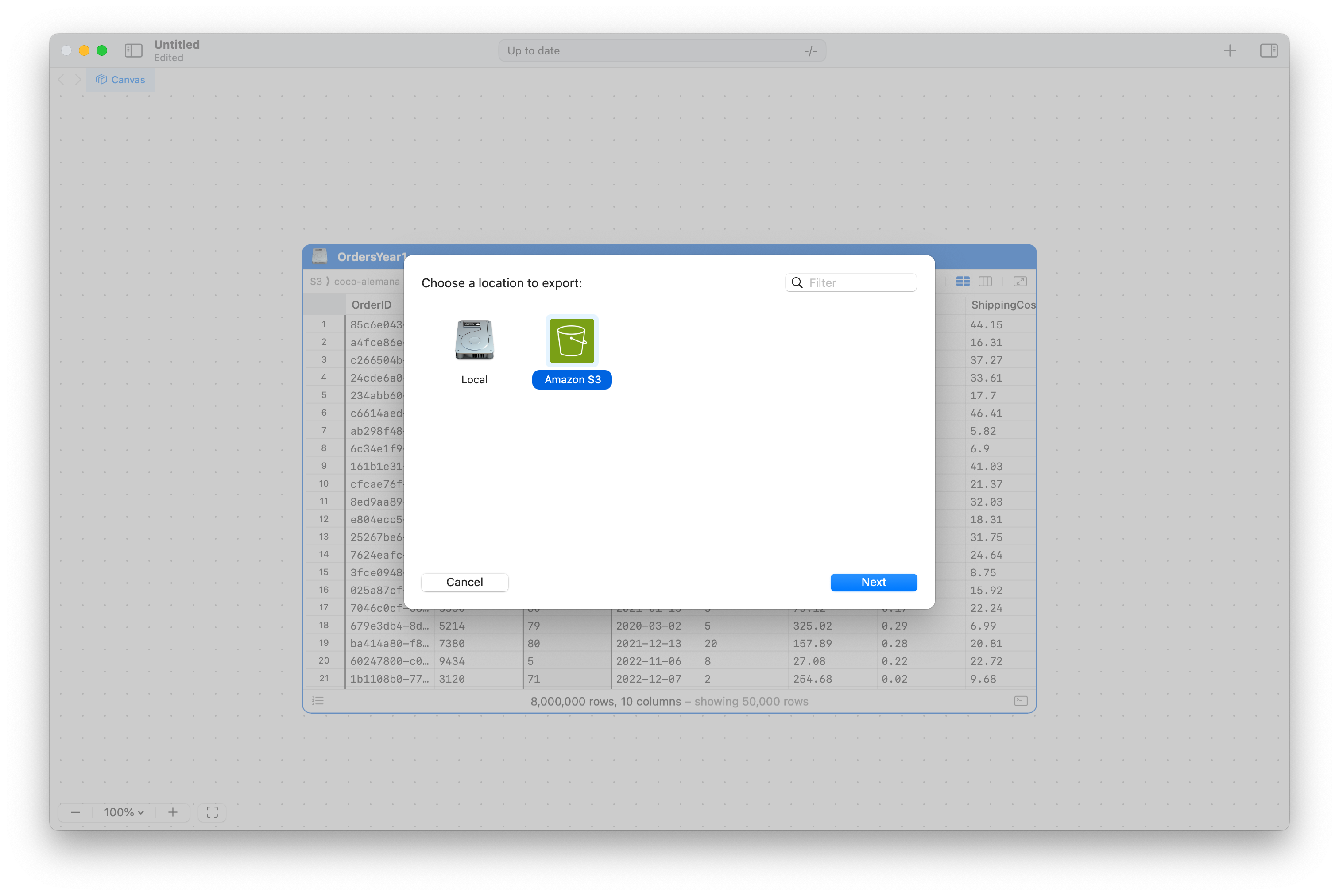
Using Finder
Section titled “Using Finder”You can use Finder to navigate your S3 buckets as if they were another folder on your computer.
Opening the S3 Folder
Section titled “Opening the S3 Folder”To view your S3 buckets, you can look on the left-hand side of Finder, for an item called “Coco Alemana”. Even though this is called Coco Alemana, it actually is your S3 folder.
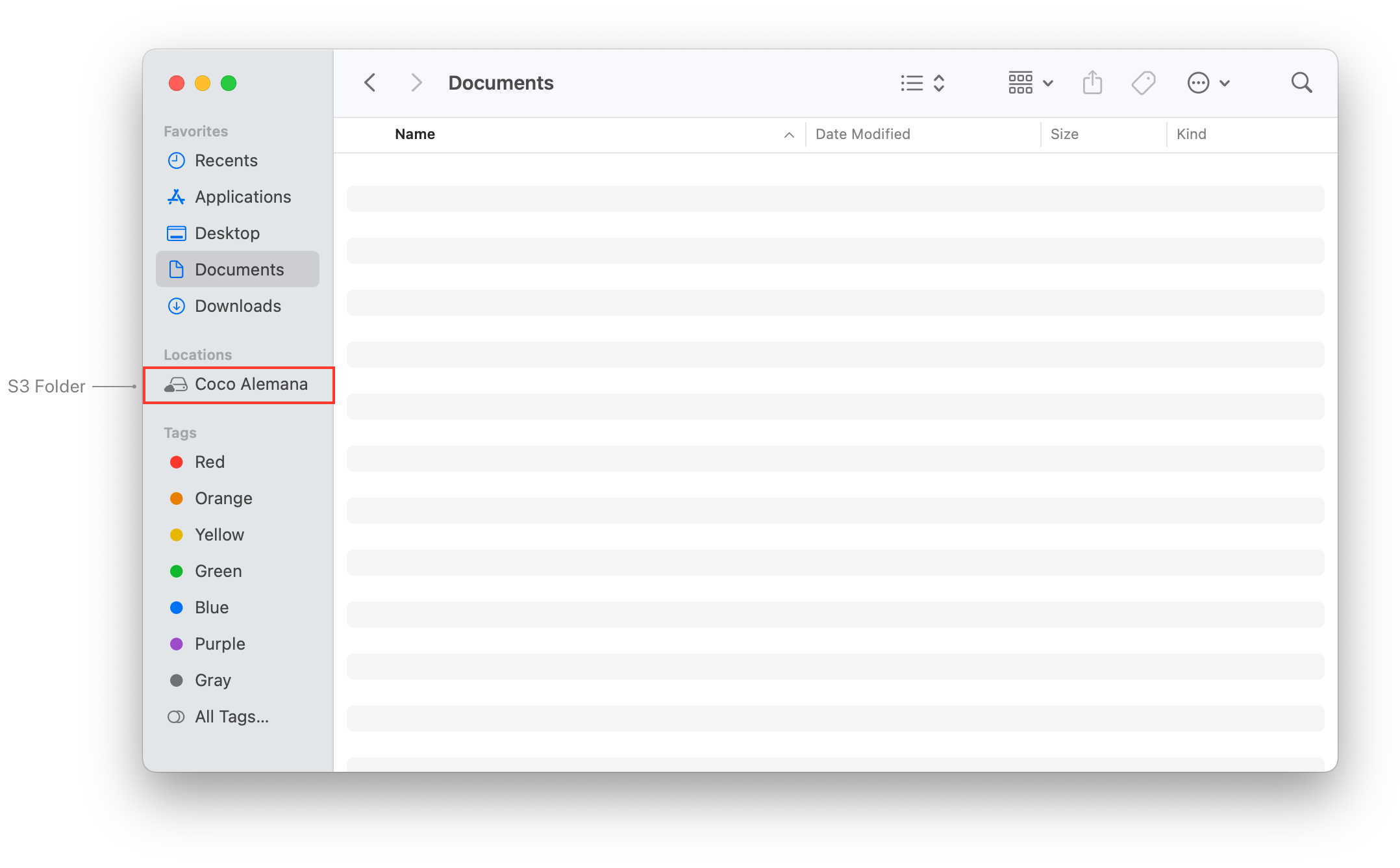
If you can’t find this folder, or if you remove it in the future, you can always navigate to ~/s3, which links to the folder above.
Once you’re in your S3 folder, you’ll see all of your buckets, and any other registered buckets you may have.
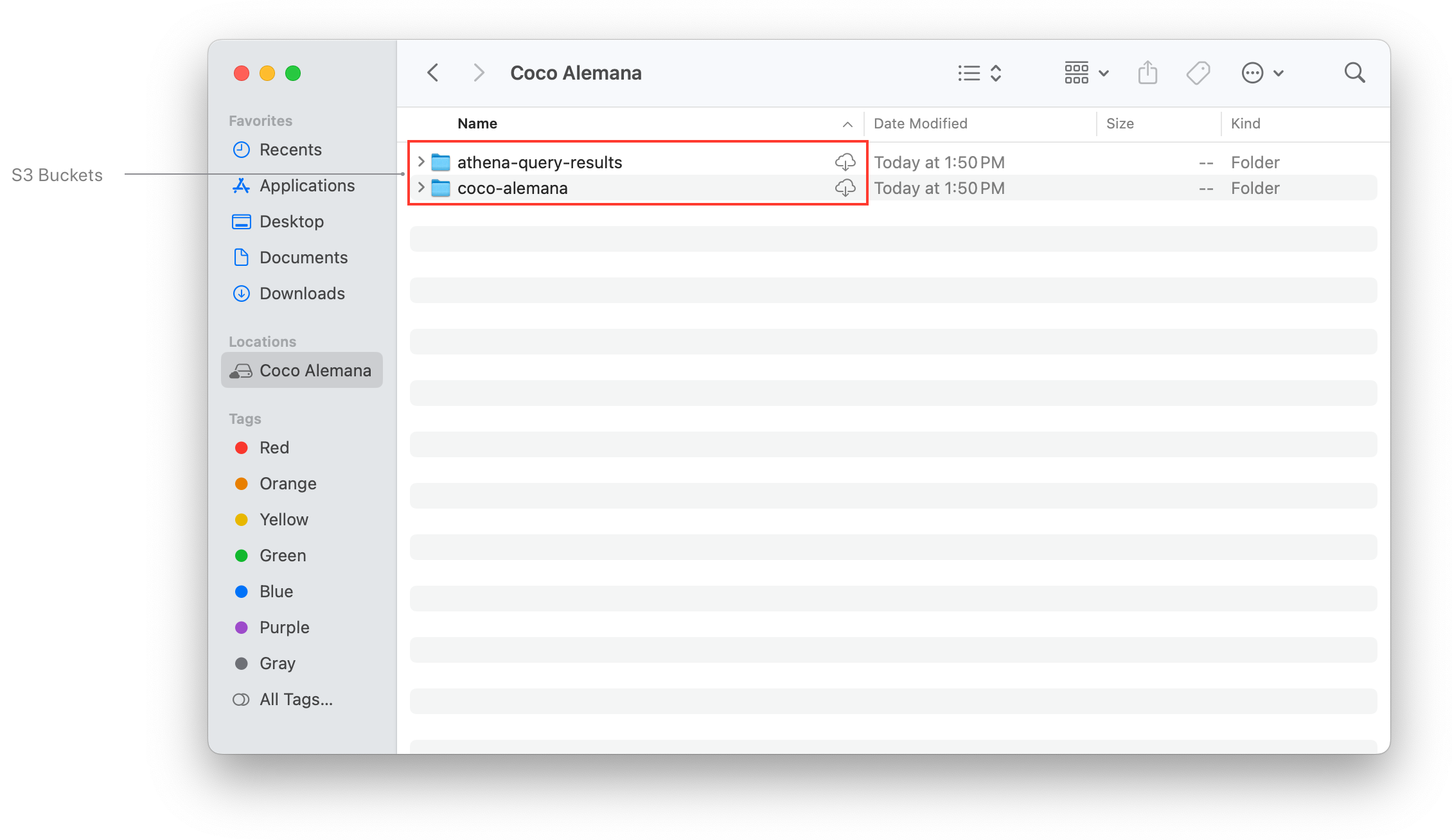
Downloading Files
Section titled “Downloading Files”To download files, you can either double click to open them, or click the Cloud Download icon to the right.
Uploading Files
Section titled “Uploading Files”Any files you drop into an S3 folder will be uploaded under that path in S3. This upload happens for you.
Additional Actions
Section titled “Additional Actions”We provide actions on each file / folder. If you right-click on an item inside an S3 folder, you should see options such as “Copy ARN” and “Copy S3 Path”
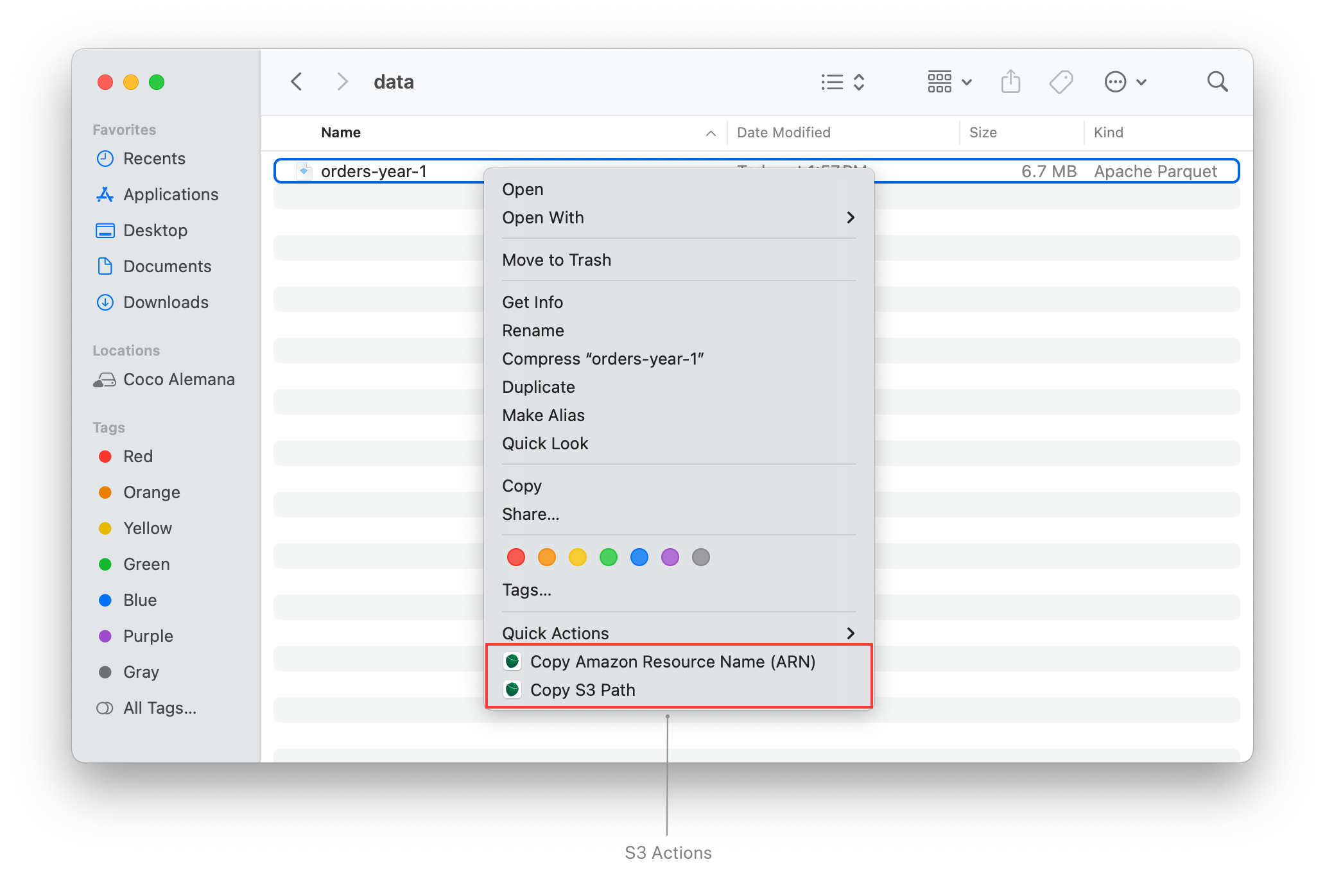
Using the Terminal
Section titled “Using the Terminal”You can navigate your S3 buckets using all the standard terminal commands.
To get started, you can navigate to the built-in folder: ~/s3.
From there, you’ll be able to use commands like ls, cat, vim, rm or perform any other filesystem command.
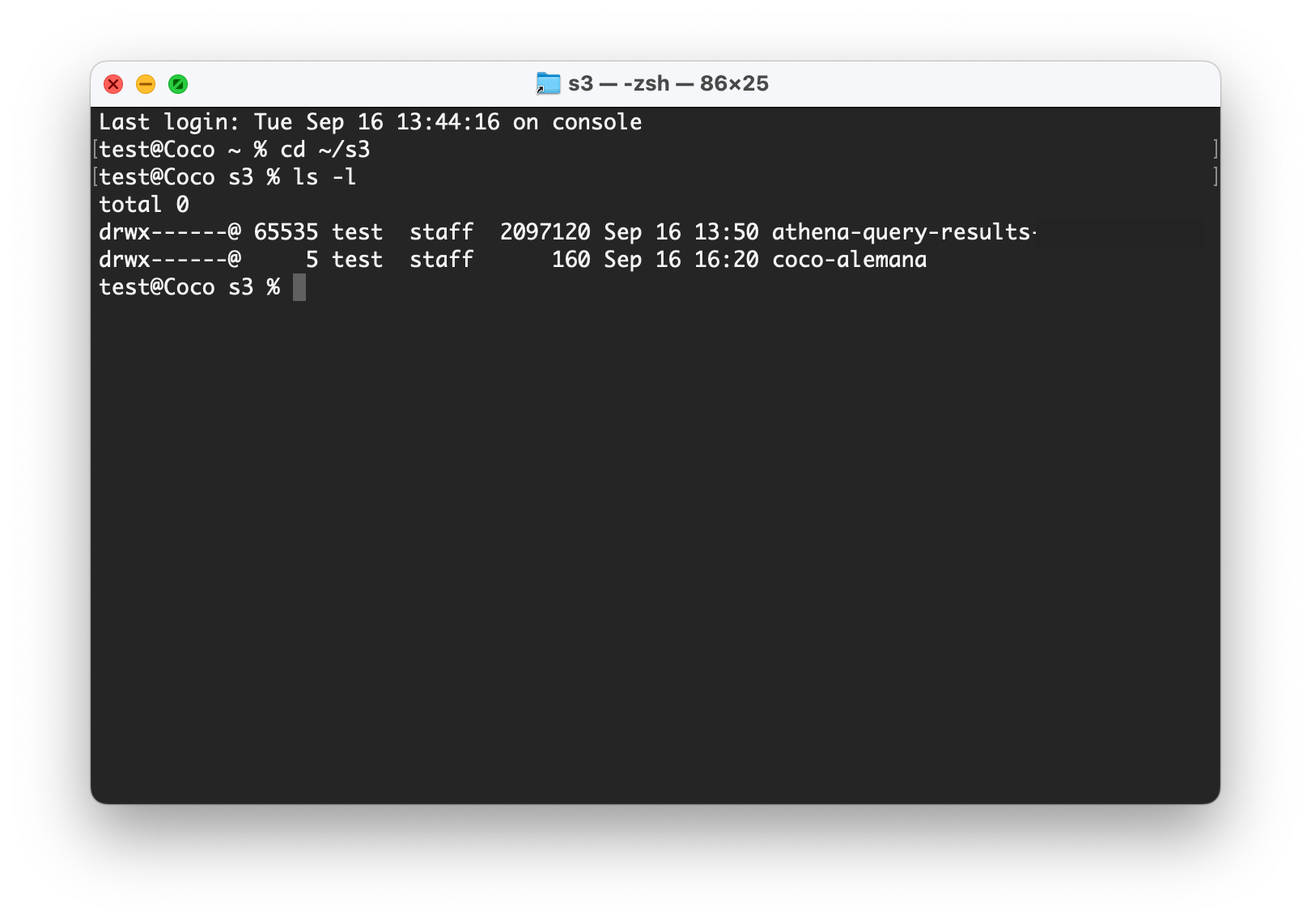
Using S3 Links
Section titled “Using S3 Links”The most common way to receive links to data in S3 is via s3:// URI links. We’ve integrated those at the operating system level, just like http links. However, instead of opening a web browser, s3:// opens in Finder, and selects the exact path for you.
1. Click the Link
Section titled “1. Click the Link”Links can be in any rich text field, such as Notes, Slack, Mail, Teams, Safari, etc.
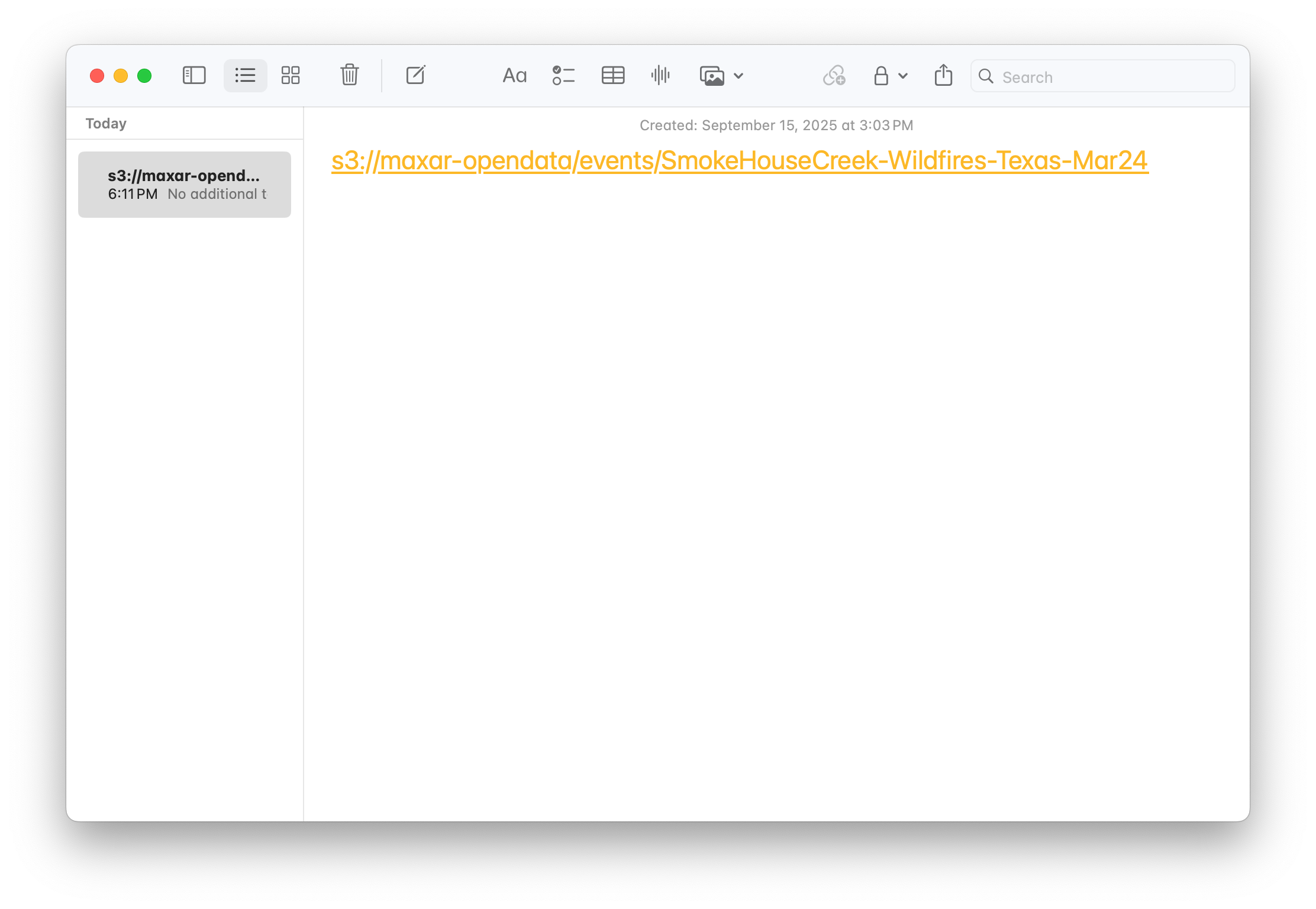
2. Finder Opens
Section titled “2. Finder Opens”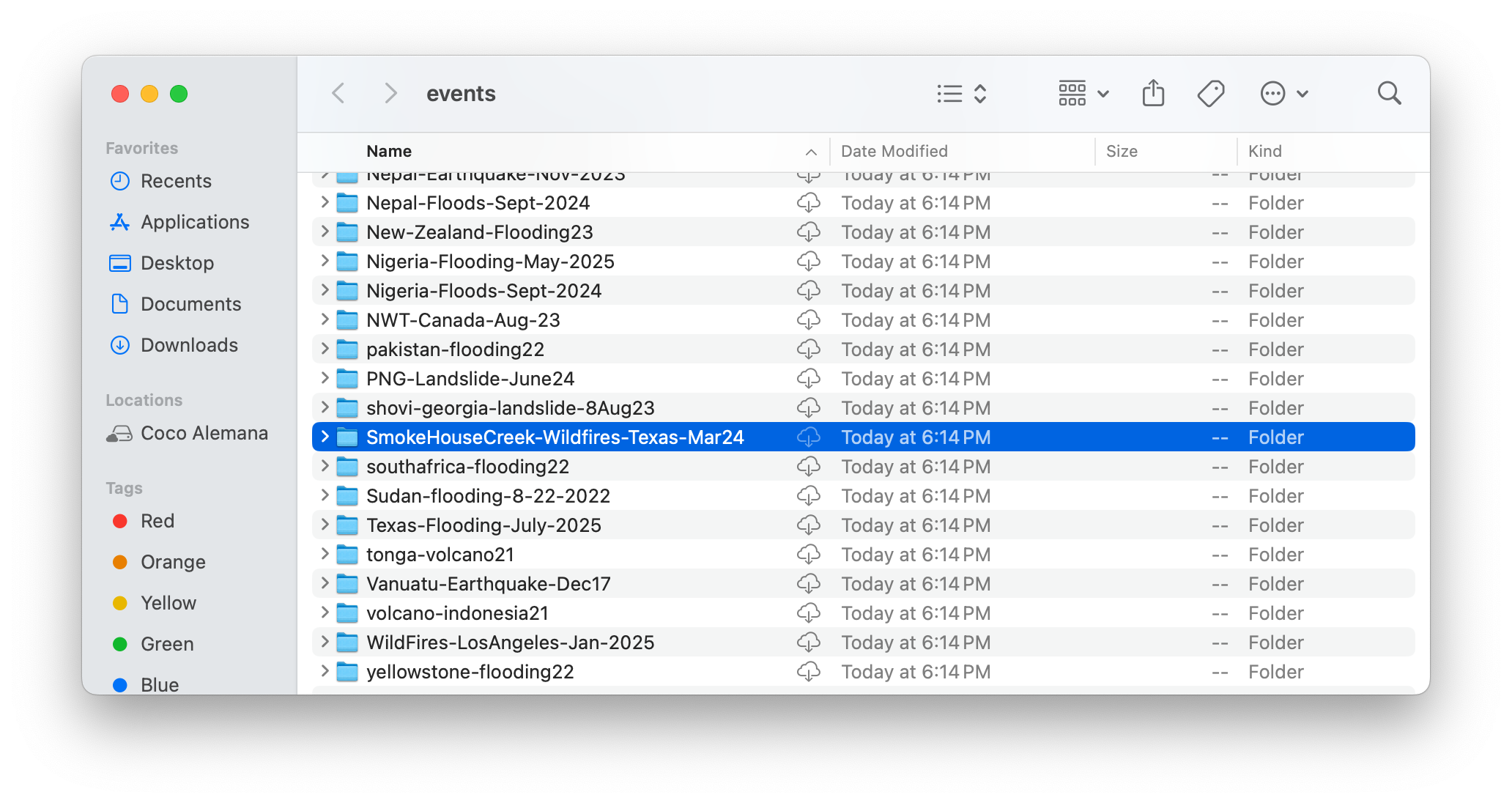
If the bucket you are accessing is not your own, then it may take two clicks to open. One to register the bucket, and a second to show in Finder.
If the path is deeply nested, it may take a few seconds to resolve all of the intermediate paths.
Registering Public Buckets & Buckets Outside Your Account
Section titled “Registering Public Buckets & Buckets Outside Your Account”You can register buckets outside of your current account, such as public buckets, or buckets where your user has a bucket policy allowing for cross-account access.
To do this, paste the s3 link (s3://) into Notes (or any other application that supports links), and click it. The first click will register the bucket in your S3 folder. If you have multiple AWS accounts registered, Coco Alemana will choose the first account which has access.
If you’re looking for an example, with a public bucket, you can click this link: s3://maxar-opendata. It should open in Finder, and allow you to navigate the Maxar public bucket.
